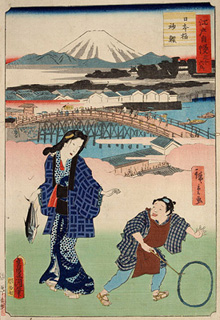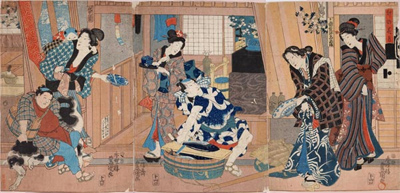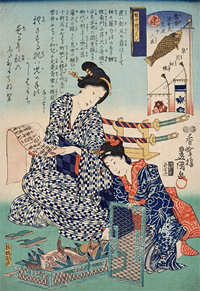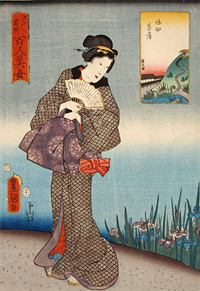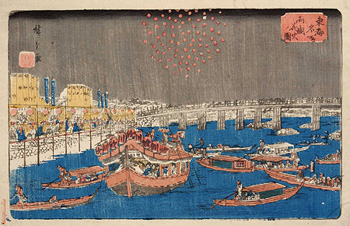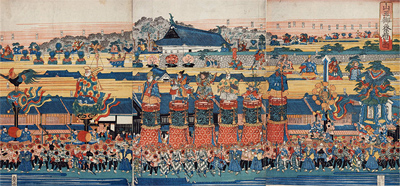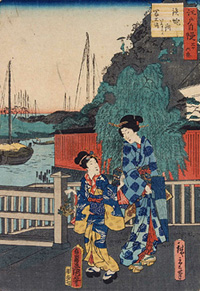EDO TOKYO Digital Museum
Spring (January - March) / Summer (April - June) / Autumn (July - September) / Winter (October - December)Summer (April - June)
April
April, known as Uzuki refers to the deutzia flowers (‘u’-flowers) which bloom in this month (‘tsuki’). This coincides with the appearance of little cuckoos in the sky of Edo. This is also the month for bonito which were beloved by the Edo residents for their delicious taste. Yamaguchi Sudō (1642-1716) penned the lines “Full of greens flood your sight. Little cuckoos up in the height. Fresh bonito as a seasonal delight" and this indeed reminds Edo residents of the coming of the early summer months.
Around 1848-1854 (Kaei period)
May
The festival called Tango-no-sekku is held on the 5th day of May and this was an important ceremony among samurai households. It was from the Edo period that this festival became a Coming of Age festival.
Samurai households placed their own family flags on which their family emblems were designed (hatasashimono), lords' family flags (nobori) and windsocks (fukinagashi) outside their homes. Common folk on the other hand, began to put up colorful carp banners to strengthen their hands in their struggle against the samurai.
This tradition still remains unchanged up to today. Both Samurai households and ordinary people decorate their eaves with irises as a charm against evil.
Painted by Utagawa Toyokuni III Around 1847 - 1848 (Kōka 4 - Kaei 1)
Painted by Utagawa Hiroshige I Around 1830-1844 (the end of the Tempō period)
June
People in the city of Edo enjoyed many festivals from the throughout the summer month of June. The Tennō Matsuri is held at Kanda Shrine (Kanda-myōjin) on the 5th to the 14th of June and the Sannō Festival is held at the Hie Shrine (Hie Jinja) on the 15th , which is one of the three biggest festivals in Edo. Other than these festivals, Shinagawa Tennō Matsuri Festival and the festival rite of Hikawa Shrine in Akasaka are also held in June. As Edo residents lived in the city where they had to tolerate living under overcrowding conditions, the summer festivals were very important as for praying against disease. The tradition to eat a piece of grilled eel on the day of Ushi (the cow in the Chinese Zodiac) became widespread during the Edo period.
Painted by Utagawa Sadashige Around 1830 - 1844 (Tempō Period)
* To view more explanation, please click the each image.


